Samsung Galaxy Z Fold 3 Vs Microsoft Surface Duo 2 - The Better Foldable
Microsoft just unveiled the Surface Duo 2 and, unless Google pulls a surprise next month, we have now seen all the foldable devices for this year. Although there are other players in that niche category, like Royole, Huawei, and Xiaomi, the two biggest names that have surfaced this year are the Galaxy Z Fold 3 and the Surface Duo 2. Unsurprisingly, there will be comparisons between the two, and we examine the most important aspects of these two in order to give that verdict.
Specs Showdown
This year, Microsoft finally caught up with the present and has given the Surface Duo 2 contemporary hardware. Generally speaking, both the Galaxy Z Fold 3 and Surface Duo 2 have more or less high-end specs, led by the same Snapdragon 888. Aside from the screens, which we'll get to later, there are also a few key differences that undecided buyers need to consider.
The 8GB of RAM that the Surface Duo 2 has is sufficient for most common use cases, including light multi-tasking. The dual-screen design of the device, however, encourages even more simultaneous use of apps where the Galaxy Z Fold 3's 12GB RAM (Plus the 3GB extension from a RAM Plus update) can make a huge difference. Conversely, the slightly larger 4,500 mAh battery of the Surface Duo 2 promises a slightly longer uptime than the Galaxy Z Fold 3 and its downgraded 4,400 mAh pack.
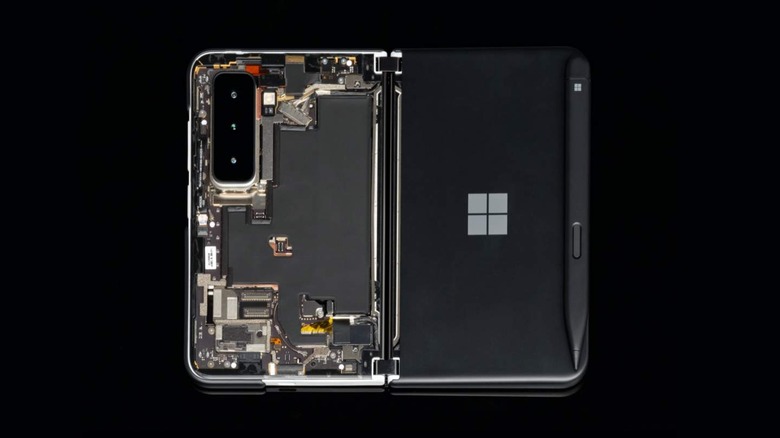
One of the most criticized aspects of Samsung's 2021 foldable is its camera system, especially the measly 4MP under-panel sensor inside. At least on paper, the Surface Duo 2's upgrades check the right boxes, including the larger 12MP selfie camera. In practice, however, Samsung has had years to perfect its camera experience, while this is only Microsoft's second rodeo (outside of the Nokia Lumia line).
There might also be a few words to be said about the styluses for these two competing foldables, neither of which have a home inside the device. Samsung's partnership with Wacom has enabled it to perfect the user experience, but it is admittedly employing something completely novel with the Galaxy Z Fold 3. The Surface Duo 2's digitizer is more traditional, but there will always be those who find N-Trig technology, which Microsoft now owns, to be less reliable anyway.
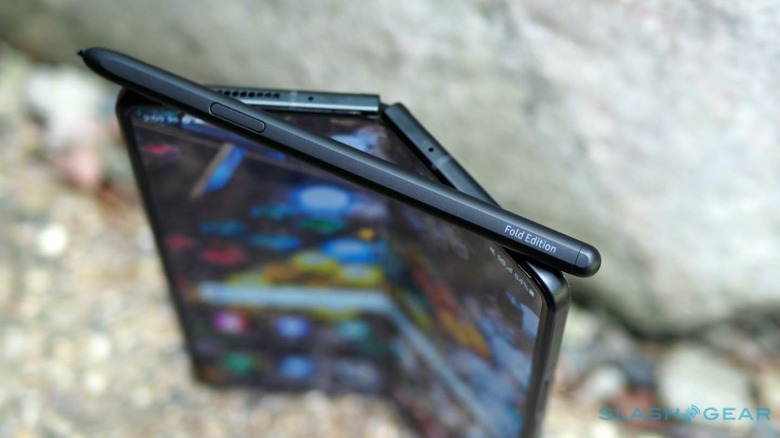
Display Differences
Strictly speaking, the Surface Duo 2 doesn't exactly qualify as a foldable device except under Microsoft's definition of "dual-screen foldable." The difference here between Microsoft and Samsung isn't simply cosmetic but actually defines the device and determines its main use cases.
The Galaxy Z Fold 3 has a single, unbroken 7.6-inch foldable main display inside that allows for more traditional app experiences, except with new windowing and split-screen capabilities possible only with a larger screen. When it folds, however, the form factor of the device, not to mention the secondary Cover Display outside, reminds one that it is still a smartphone by nature.
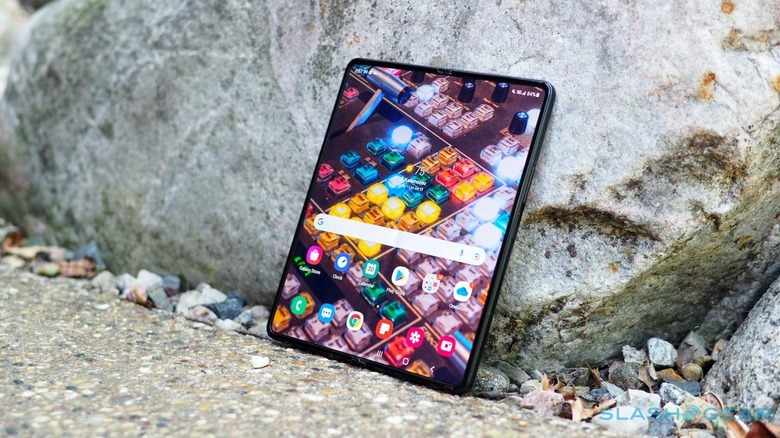
In contrast, the Surface Duo 2 adopts two 5.8-inch screens that, for all intents and purposes, function separately and are only joined by software. This requires Microsoft and developers to make some modifications to avoid breaking the user experience across the physical divide. In contrast, Samsung takes on that burden so that developers won't have to design their apps specifically for the Galaxy Z Fold 3. The Surface Duo 2's aspect ratio and size also make it less like a phone and more like a book that uses screens instead of paper.
The different design choices that the two companies made also have consequences for lovers of the digital pen. While the Galaxy Z Fold 3 offers a seamless canvas, its softer surface and crease in the middle can easily throw artists off. The Surface Duo 2 uses more traditional screens and digitizers, however, offering more confidence and reliability at the cost of smaller drawing space.
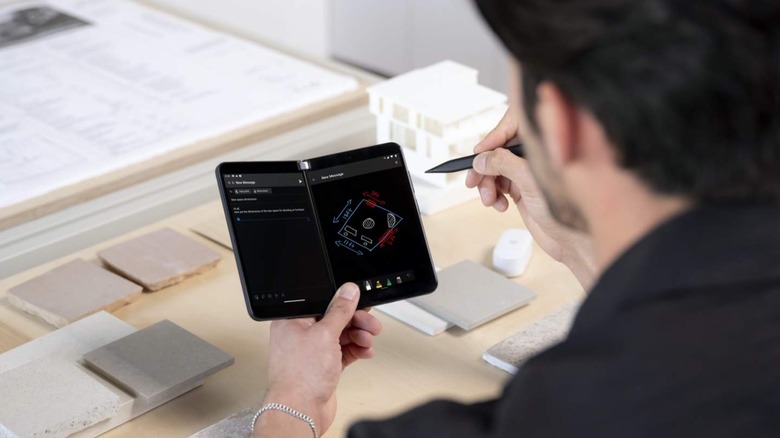
Software Situation
Although advertised for mainstream consumers, the two foldables are clearly aimed at power users, and their user experiences are designed around those. Both have multi-tasking capabilities at the forefront, but Samsung has had years to work on its version. Unlike the Surface Duo 2's mostly dual-screen format, the Galaxy Z Fold 3 can support as many as five apps running simultaneously, including windowed apps.
Even with all things equal, however, there might be one aspect where Microsoft doesn't inspire that much confidence yet. Samsung has signed the Galaxy Z Fold 3 up for at least three years of Android updates and four years of security updates, while Microsoft has committed to only three years of updates for the Surface Duo 2. Being a newcomer in the Android smartphone race, Microsoft has yet to prove its ability to actually keep that commitment, while Samsung keeps better and better in that regard.
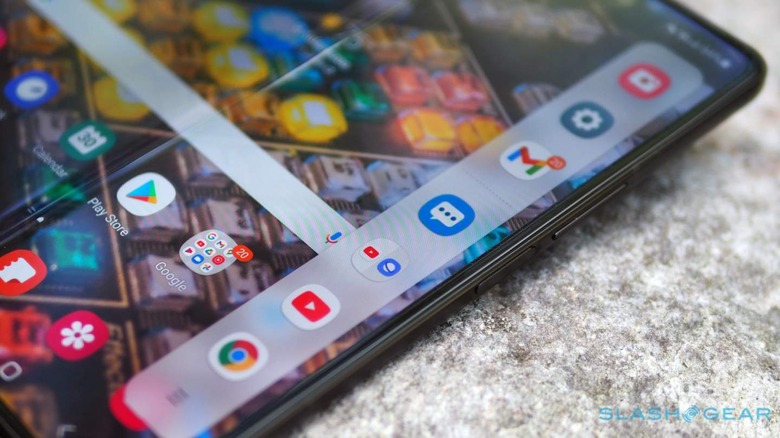
Wrap-up
Both foldables in name, the Galaxy Z Fold 3 and Surface Duo 2 serve different purposes and slightly different target markets. The Surface Duo 2 seems to be intended for business-minded mobile users who need a Microsoft Office device in their pockets. The Galaxy Z Fold 3, on the other hand, is clearly designed for users who want to be able to switch between smartphone and tablet experiences on the fly. Of course, both devices have the hardware to support the same sets of apps and uses cases, but their form factors do put some limits on that.
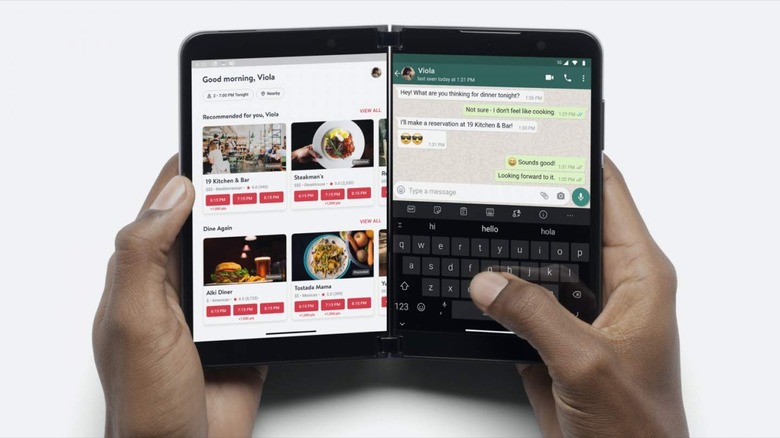
Price is also a determining factor, with the Surface Duo 2 looking more accessible with its $1,500 price tag compared to the $1,800 of the Galaxy Z Fold 3. That said, you also get more for what you pay for, with Samsung's foldable having two 120Hz displays, five cameras, and more RAM.
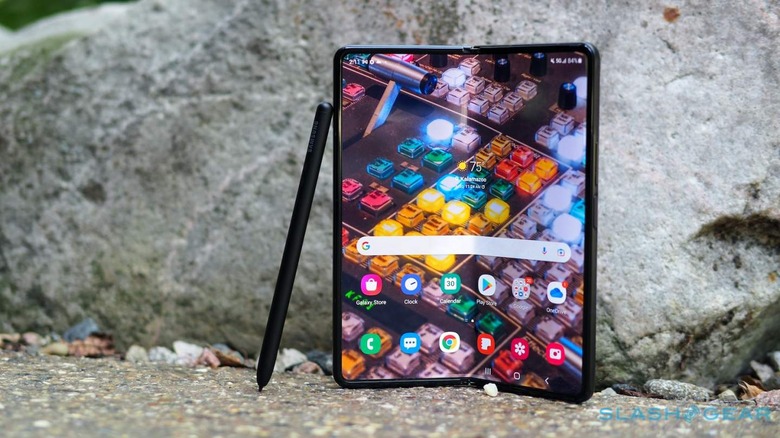
It would be nice if we didn't need to make a choice between a sturdy dual-screen display and a creased flexible screen that can fold in only one direction, but we're far from having the technology to combine both. In literal flexibility of its hinge, its better camera hardware, and more affordable price tag, the Microsoft Surface Duo 2 seems to take the lead. Samsung, however, has the advantage of foresight, flexibility in use cases, and reliability of software updates that make the Galaxy Z Fold 3 the foldable phone to beat this year, presuming you have the cash to burn for one in the first place.
